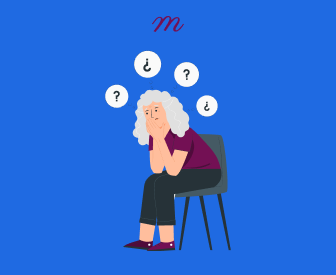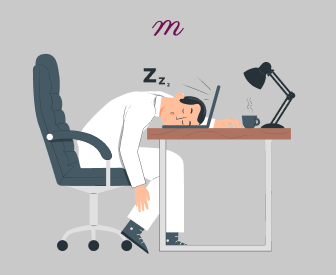Have your progress notes written for you automatically
What strategies do you have in mind to engage your clients and improve your occupational therapy practice? As an occupational therapist, setting meaningful goals for your clients is essential. However, covering all aspects, such as physical, cognitive, self-care, and work-related goals, can be overwhelming. In this blog, we will provide you with a step-by-step guide on how to set goals, starting with understanding SMART goals and then moving on to setting short- and long-term goals. We will also discuss categorizing these goals and involving your clients in goal-setting.
Also, we will share examples for adults and children to inspire collaboration between you and your clients to achieve their goals. Furthermore, we will teach you how to make the goal-setting process interactive and engaging, allowing your clients to participate actively in their treatment and feel empowered. By following our guidance, you can establish client-centered goals and support your clients in making meaningful progress.
Understanding Occupational Therapy and Its Benefits
Occupational therapy aims to enhance your ability to carry out the daily activities that matter to you. As occupational therapists, we collaborate with clients to establish individualized objectives and offer techniques and resources that enable them to function independently and participate in the activities they require and desire.
Functional Independence
OT helps individuals improve their self-care, productivity, and leisure skills. If someone struggles with daily tasks such as bathing, cooking, or driving due to an injury, disability, or health condition, an occupational therapist can help by providing adaptive techniques and equipment. This will help the individual live independently and safely in their home.
Life Enrichment
OT is not solely focused on accomplishing necessary functions but on enabling individuals to lead fulfilling and enriching lives. As an occupational therapist, you can assist your clients in exploring various hobbies, social activities, and other interests that inspire and satisfy them.
Also, you can help your clients establish objectives to enhance their career or education. The ultimate aim is to empower them to engage in activities that hold personal significance and meaning.
Exploring the Connection Between Occupational Therapy and Mental Health
Occupational therapy is an excellent treatment option for managing the symptoms of various mental health conditions, including anxiety, depression, and PTSD. As an occupational therapist, you can help clients develop effectivecoping mechanisms, set healthy boundaries, practice mindfulness, and make lifestyle changes that improve their well-being. Engaging in meaningful activities and achieving small goals can release dopamine, boosting mood and motivation. By setting collaborative yet achievable goals and providing practical strategies, occupational therapists can help people with mental illness regain their sense of control and confidence in their ability to participate in meaningful activities.
OT is a practical and constructive support system for managing mental health conditions and achieving personal goals. Occupational therapists work closely with clients to create personalized treatment plans promoting wellness, independence, and community participation. Regardless of age, everyone can thrive with the proper support and strategies.
Occupational therapists are trained to support clients with mental health conditions in achieving their goals. They do so in several ways:
- Symptom Management Strategies: Occupational therapists can help clients develop routines, prioritize tasks, and pace themselves to minimize triggers exacerbating symptoms.
- Meaningful Activities: Occupational therapists work with clients to identify hobbies, interests, and social activities that can boost motivation and mood.
- Adaptations: Occupational therapists can recommend changes to the environment, tools, equipment, or daily living tasks to make them more accessible and manageable for those struggling with daily tasks.
- Ongoing Monitoring: Occupational therapists regularly evaluate attainment and adjust goals based on a client’s changing needs and capabilities.
The Backbone of Occupational Therapy: Setting Collaborative and Meaningful Goals
As an occupational therapist, one of your most important responsibilities is to assist clients in setting and attaining significant objectives. Developing meaningful client-centered goals will significantly impact your clients’ progress and outcomes, resulting in increased independence and improved quality of life.
Creating Client-Centered Goals
The most effective approach is to work with your client to establish goals tailored to their unique needs. Discuss their strengths, challenges, and priorities to determine the appropriate short—and long-term goals. Some clients may benefit most from learning coping strategies or establishing a self-care routine, while others may prioritize work-related or social objectives.
Customizing Treatment
Occupational therapy should be customized to meet each client’s needs and circumstances. Some clients may only require short-term therapy to develop skills and confidence. However, those with chronic conditions may need ongoing support. The decision to choose short- or long-term treatment should be based on factors such as diagnosis, symptom severity, level of functioning, and client motivation. For a useful strategy to enhance customized treatment planning, here’s a helpful tool to explore HERE.
Encouraging Independence
OT aims to help clients achieve the highest possible independence and quality of life. We can provide suggestions and adaptations to make everyday tasks more accessible and help clients develop independent living skills. For children, our focus may be on developing skills to support their learning and social participation.
Creating SMART Pediatric and Adult Occupational Therapy Goals
When working with clients to achieve their goals, it can be helpful to use the SMART framework. SMART stands for Specific, Measurable, Attainable, Relevant, and Time-bound. This framework helps to focus and provide direction, leading to a clear path to success. With SMART goals, objectives are well-defined, progress can be easily tracked, timelines are reasonable, and skills or activities selected are purposeful and relevant to your client’s needs. Goals such as “improve mobility” or “increase independence” are too broad and do not provide clear direction. To ensure success, it is essential to define specific objectives. For example, “The client will be able to climb one flight of stairs with minimal assistance within two months.” Evaluations and tracking outcomes should be used to measure clients’ progress.
Specific goals target a clear outcome.
Instead of “improve handwriting,” try “write legibly for 30 minutes.”
Measurable goals can be objectively assessed.
“Complete morning routine in 1 hour” is more effective than “improve self-care skills.”
Working with children
Involve parents and teachers. What activities do they struggle with? What skills do they want to gain? Set play-based goals, such as “participate in pretend play with peers for 15 minutes.” Provide opportunities for children to practice skills in natural environments.
When working with adults
Discuss meaningful activities they want to resume and ask open-ended questions to determine specific barriers are helpful. Set goals to systematically overcome each barrier. If depression reduces motivation, start with “shower and dress daily.” As mood improves, build up to “cook a meal once per week” and “call a friend twice weekly.”
Setting Achievable Goals for Occupational Therapy: Examples of Short-Term and Long-Term Objectives
Occupational therapy goals should be established for both short-term and long-term periods. Short-term goals can be achieved within three months, while long-term goals can take 6-12 months. Initially, clients should focus on basic skills, and the difficulty level should gradually increase as they improve. Regularly reviewing and revising the goals based on clients’ feedback and progress is essential.
Occupational Therapy Short-Term Goals Example
Short-term goals aim to build clients’ confidence and motivation by focusing on incremental progress.
- For example, a short-term goal for a client with limited mobility could be improving sitting balance to four seconds with minimal support.
Reaching short-term goals frequently helps clients track their progress and remain engaged in the therapeutic process. Based on the client’s progress, these goals should be reviewed and updated every few weeks.
Occupational Therapy Long-Term Goals Example
Long-term goals represent meaningful life changes that provide purpose and direction.
- For example, a long-term goal for a client with a traumatic brain injury could be returning to work as an accountant, independently managing a full-time workload within six to twelve months.
Long-term goals can take months or years to achieve, and it is necessary to modify short-term goals to stay on track. Revisiting long-term goals with the client ensures they remain realistic and meaningful. With hard work and perseverance, long-term goals become life-changing accomplishments.
Enhancing Children’s Development and Learning Through School-Based Occupational Therapy
School-based occupational therapy is an effective way to help children with disabilities or learning difficulties participate fully in school activities. It’s a collaborative approach in which occupational therapists work directly in schools to observe children in their learning environment and tailor treatment to their needs. The benefits include no missed class time for appointments and children learning skills that directly translate to school routines. To achieve these goals, children, parents, teachers, and therapists work together to understand a child’s needs, strengths, and challenges across settings. This collaborative approach ensures that the most meaningful and impactful goals are set to support children’s success and participation.
School-Based OT Goals Examples
Examples of school-based occupational therapy goals include:
- Improving handwriting by using specialized grips or paper positioning.
- Developing time-management skills to complete assignments on time.
- Learning coping strategies to handle anxiety, sensory issues, or social difficulties.
- Gaining independence in self-care activities like packing a backpack, opening lunch items, or using the restroom.
Creating Effective ADL Goals: A Guide to Achieving Independence
Occupational therapists are an integral part of the healthcare system. They help individuals with physical or cognitive disabilities and older adults achieve greater independence in their day-to-day activities, known as activities of daily living (ADL) goals. They work closely with their clients to design customized plans incorporating adaptive techniques, specialized equipment, home modifications, and exercises. By assessing the clients’ current abilities and challenges, therapists set achievable short-term goals that help build new skills and long-term goals for maximum independence.
- For instance, a short-term goal could be to help a client dress independently within 15 minutes, with a long-term goal of achieving independent dressing within 10 minutes.
Setting achievable ADL goals can have a profound positive impact on clients’ overall well-being. By gaining independence in everyday activities like cooking, bathing, and getting ready for bed, clients can experience increased self-esteem and decreased frustration or sadness. Regular re-evaluation of progress is essential to measure success and identify new goals. Some clients may need ongoing therapy to maintain their functionality, while others may be able to achieve complete independence. Graduating from treatment with the right tools and strategies can help clients continue to succeed at home. Ultimately, the goal is to empower clients to live life on their own terms with renewed confidence and a sense of autonomy.
Boost Your Productivity with this Printable Occupational Therapy Goal List
Developing appropriate goals for each client can be challenging as an occupational therapist. To assist you in your work, we have compiled a list of suggested occupational therapy goals you can use as a starting point. We aim to help you brainstorm with your clients and make a personalized treatment plan that caters to their unique requirements. You can modify these goals to develop a customized and effective treatment plan that helps your clients achieve their desired outcomes.
Suggested Occupational Therapy Goals for Adults and Older Adults:
- Enhance upper extremity motor function.
- Improve grip strength.
- Increase the range of motion in the shoulders, elbows, and wrists.
- Enhance dexterity and hand-eye coordination.
- Improve balance and coordination.
- Improve gait and mobility.
- Improve the ability to perform daily living activities independently.
- Improve the ability to use assistive devices effectively.
- Enhance cognitive skills like memory, problem-solving, and attention.
- Improve social skills and the ability to interact with others.
- Reduce pain and improve pain management strategies.
- Increase standing balance to 30 seconds with minimal support.
- Improve hand dexterity to open and close jars independently.
- Improve mobility by walking with a cane for 20 minutes without rest breaks.
- Develop compensatory strategies to manage fatigue and complete daily tasks.
- Increase range of motion in shoulders to allow for dressing and hygiene tasks.
- Build upper body strength to climb two to three stairs with handrail support.
- Improve fine motor control to manipulate buttons and zippers.
- Develop coping skills to manage anxiety and depression that may interfere with therapy progress.
Suggested Occupational Therapy Goals for Children:
- Enhance fine motor skills to manipulate toys independently within 3 to 6 months.
- Improve hand-eye coordination to accurately catch and throw balls or other objects within 6 to 12 months.
- Within 6 to 12 months, client will develop self-care skills like feeding themselves with utensils, dressing with minimal assistance, and independently using the toilet.
- Enhance gross motor skills such as sitting up, crawling, walking, running, and jumping within age-appropriate timeframes.
- Within 6 to 12 months, develop age-appropriate communication and language skills for clients with speech delays through targeted exercises.
- Improve sensory processing and integration to regulate emotions, behaviors, and attention within 6 to 12 months.
The Bottom Line
Occupational therapy can unlock incredible transformations in mental health and quality of life. Occupational therapists can help clients achieve milestones they never thought possible with a client-centered approach to goal-setting and regular communication. Remember, every small step counts, and progress is always within reach. By working together and following the SMART framework, we can set our clients up for long-term success and help them live their best lives.
If you’re looking for the best note-taking app to help you write occupational therapy Notes, subscribe to Mentalyc today! Join a community of professionals dedicated to improving mental health and well-being, and stay up-to-date on the latest developments and best practices.
FAQs About Setting OT Goals
How do I determine if a client will benefit more from short- or long-term occupational therapy?
Short-term occupational therapy, ranging from a few weeks to 3-6 months, can be effective for conditions that require minor lifestyle adjustments or skills retraining. Long-term occupational therapy, 6-12 months or longer, is better suited for chronic conditions, significant functional limitations, or complex rehabilitation needs.
The answer also depends on several factors, including:
- The client’s responsiveness to treatment. If progress is slower, long-term occupational therapy may be needed.
- The client’s motivation and support system. Strong motivation and support can help you achieve goals faster.
- The specific goals set. Complex, multi-step goals usually take longer to achieve.
What kind of goals are suitable for occupational therapy?
Occupational therapists can help clients set goals related to improving their ability to perform daily activities and function at a higher level independently. Some common goals include:
- Improving self-care skills like bathing, dressing, feeding and toileting
- Increasing mobility and strength
- Improving dexterity and hand function
- Performing household tasks more easily
- Returning to work or school
- Managing stress and anxiety that impact daily life
- Developing compensatory strategies to overcome challenges
The key is specific, measurable, and achievable goals to evaluate progress throughout therapy.
How do I determine if a client has met their occupational therapy goals?
You’ll want to reassess clients regularly throughout therapy to determine if they’re making meaningful progress toward their goals. Some signs a client has met their goals include:
- They can independently perform the activity at the level outlined in the goal.
- They report an improved ability to function in daily life due to therapy.
- Standardized tests, assessments, or observations show they’ve achieved the functional level targeted.
You can also get feedback from family members to confirm the client is applying what they’ve learned in therapy to their everyday routines at home. Once goals are fully met, you can discharge the client or set new, more advanced goals to continue therapy.
How do I write specific, measurable occupational therapy goals?
Specific, measurable goals use concrete language to outline what the client can do differently after occupational therapy. They include:
- A condition, behavior, or task the client wants to improve
- A defined action the client will be able to perform.
- An amount or frequency that action will be done
- A timeline for achieving the goal
What are some examples of SMART occupational therapy goals?
Examples of SMART goals include:
- Wash and dry hands independently three out of four times within two weeks.
- Stand from a seated position without assistance at least 50% of the time in three months.
- Open childproof medicine bottles independently nine out of ten times in six weeks.
- Walk 20 feet with a walker and only one rest break in one month.
How do I develop client-centered occupational therapy goals? Client-centered goals are made by:
- Asking the client what activities are most important to them
- Discussing the client’s values, interests, and needs
- Involving the client in deciding the goal and timeline
- Making the goal meaningful and relevant to the client’s daily life
- Revising the goal as needed based on the client’s feedback
Resources:
- Lyon, S. (2023, February 20).What There is to Know About ADLs and IADLs in a Healthcare Facility. Verywell Health. https://www.verywellhealth.com/what-are-adls-and-iadls-2510011
- Concorde Career College. (2020, September 30).How Can Occupational Therapy Help with Mental Health?https://www.concorde.edu/blog/how-can-occupational-therapy-help-mental-health
- Edemekong, P. F., Bomgaars, D. L., Sukumaran, S., & Schoo, C. (2023, June 26).Activities of Daily Living. National Center for Biotechnology Information. https://www.ncbi.nlm.nih.gov/books/NBK470404/
- Heffron, C. (2024, February 6).What is School-Based Occupational Therapy? The Inspired Treehouse. https://theinspiredtreehouse.com/school-based-occupational-therapy/
- Henry Ford Health. (2023, August 7).The Benefits of Occupational Therapy. https://www.henryford.com/blog/2023/08/the-benefits-of-occupational-therapy
- Kristenson, S. (2024, February 7).9 Examples of SMART Goals for Occupational Therapy. Develop Good Habits. https://www.developgoodhabits.com/smart-goals-occupational-therapy/










